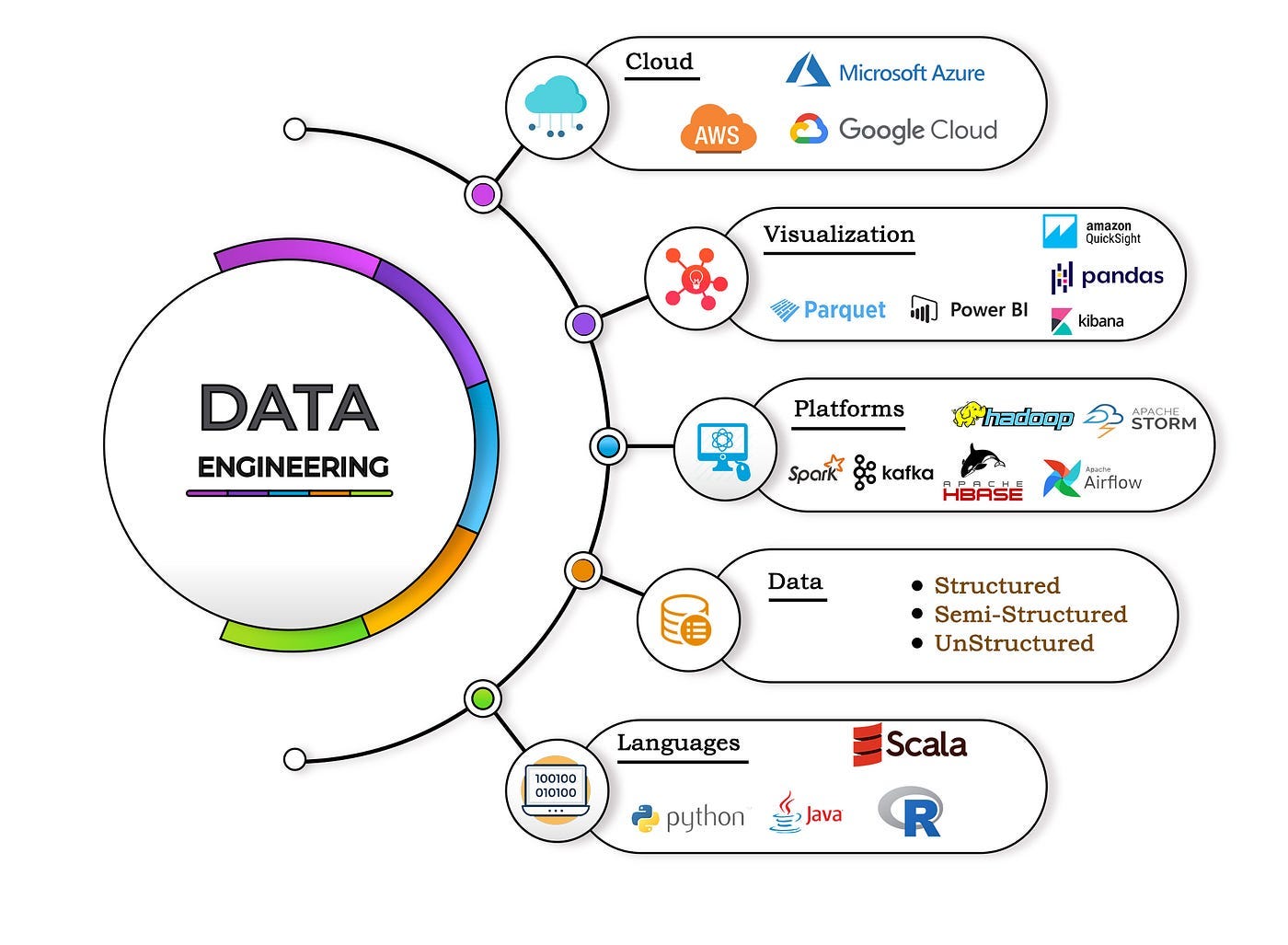In today’s digital ecosystem, where data is the new oil, the synergy between Data Engineering and Product Management is emerging as a cornerstone for building scalable, intelligent, and user-centric products. While product managers focus on what to build and why, data engineers ensure that the infrastructure and pipelines behind those decisions are robust, reliable, and insightful.
Together, they create a feedback loop that fuels innovation, growth, and long-term success.
Understanding the Roles
🔹 Product Management (PM):
Product Managers are responsible for identifying customer needs, prioritizing features, aligning stakeholders, and ensuring that the product delivers business value.
Key responsibilities:
- Market/user research
- Defining product vision and roadmap
- Collaborating with design and engineering
- Measuring success through KPIs and feedback
🔹 Data Engineering (DE):
Data Engineers build and maintain systems that collect, store, and process large-scale data. They ensure that PMs and other stakeholders have clean, timely, and accessible data for informed decisions.
Key responsibilities:
- Building data pipelines (ETL/ELT)
- Managing data lakes, warehouses, and real-time systems
- Ensuring data quality, security, and scalability
- Supporting analytics and ML workflows
Where Product Management Meets Data Engineering
The intersection of these two domains unlocks powerful possibilities:
1. Data-Driven Decision Making
PMs rely on historical and real-time data to make product decisions—from feature prioritization to user experience optimization. Data Engineers provide the infrastructure to collect and query this data efficiently.
Example: A PM at an e-commerce company wants to understand cart abandonment patterns. The data engineer builds a pipeline to stream and process event-level data in real-time, enabling immediate action.
2. Experimentation and A/B Testing
To run successful A/B tests, you need both strategy and solid data instrumentation. PMs design the experiments, while DEs ensure proper event tracking and experiment data integrity.
Good data logging = meaningful experiment results. Without DE support, even well-designed experiments can produce misleading insights.
3. Product Analytics & KPIs
Product metrics like MAU, retention, conversion rate, and NPS depend on accurate and consistent data.
- PMs define what to measure.
- DEs ensure that those metrics are tracked, stored, and visualized correctly.
4. Personalization & ML Features
Many modern products include personalization—recommendations, dynamic pricing, smart notifications, etc.
PMs define the business logic behind personalization; DEs make the data available for ML models to train and serve recommendations at scale.
Real-World Use Cases
| Use Case | PM's Role | DE's Role |
|---|---|---|
| Feature Usage Analysis | Define what data to track and analyze | Build pipelines, track events |
| Churn Prediction | Define KPIs and cohort logic | Enable ML-ready datasets |
| Search Optimization | Identify gaps in search experience | Create logs & structure query data |
| Real-time Dashboards | Decide which metrics to monitor | Build scalable streaming infrastructure |
Best Practices for Collaboration
- Align Early: Involve data engineers early in the feature scoping or OKR planning process.
- Define Clear Data Requirements: PMs should provide data dictionaries, tracking specs, and KPIs.
- Standardize Tracking: Use consistent event names, metadata, and logging formats.
- Embrace Documentation: Maintain shared documentation on schemas, dashboards, and metrics definitions.
- Foster a Data-First Culture: Encourage both PMs and DEs to prioritize data quality, not just speed of execution.
The next wave of product development will involve agentic systems—where AI agents autonomously analyze product data, identify friction points, and suggest feature tweaks. This evolution will require even deeper collaboration between PMs, DEs, and data scientists, ensuring the underlying systems are flexible, scalable, and secure.
The Final Thought
Great products aren't just built on instinct—they’re built on insight. And that insight comes from a robust data foundation, made possible by seamless collaboration between Product Management and Data Engineering.
If you're building a modern product team, don’t treat data engineering as a back-office function—treat it as a strategic partner in shaping your product roadmap and user experience.
